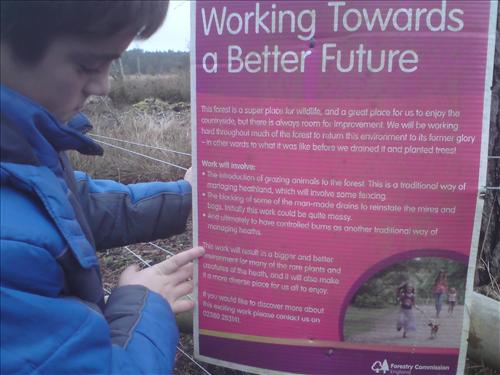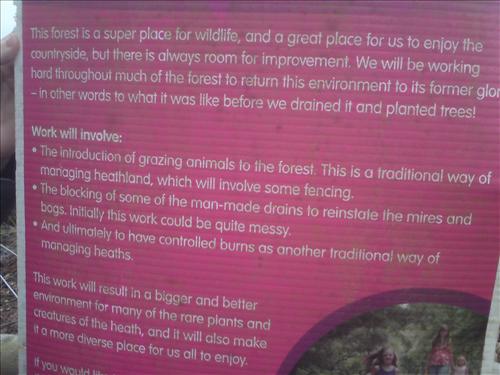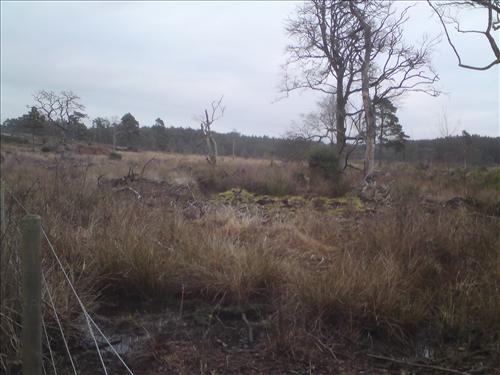Should the Forestry Commision cut down the trees for marshes and meat?
- Thread starter No Idea
- Start date
-
Come along to the amazing Summer Moot (21st July - 2nd August), a festival of bushcrafting and camping in a beautiful woodland PLEASE CLICK HERE for more information.
You are using an out of date browser. It may not display this or other websites correctly.
You should upgrade or use an alternative browser.
You should upgrade or use an alternative browser.
In some cases this type of management can create an intersting habitat. Diversity is a good thing. i'm sure the FC will preserve it's objective of maintaining a good stock of wood.
On heathland? Yes its a great idea, keeps down the undergrowth and lets a different type of eco system flourish.
although the loss of woodland is bad in general as long as it wasn't ancient woodland (and it won't be) no harm no foul, FC replant a lot of woodland so some area's that are cut down are far outweighed by the area's where they've done work to re-connect existing or ancient woodland with new woodland.
Considering that the trees were planted as alien species for a cash crop I really can't see the problem. They not doubt will be planting more elsewhere to make up for the removal of those trees in that area.
As for using cattle to maintain the heathland all the better for it
As for using cattle to maintain the heathland all the better for it
More and more marshland is being recreated in this country (sometimes on prime farmland!)
It is a habitat that is much neglected, and bringing it back encourages lots of birds.
Plus they can graze cows on it. (herbivores needed to save it turning back to scrub)
It is a habitat that is much neglected, and bringing it back encourages lots of birds.
Plus they can graze cows on it. (herbivores needed to save it turning back to scrub)
The type of wood they cut down looks very dense. More like a badly managed plantation than anything of any real biodiverse value.
robin wood
Bushcrafter (boy, I've got a lot to say!)
What you are posting pictures of is relatively young secondary woodland with conifer plantation dating from the last 50 years, this is not a rare or endangered habitat in the way rainforest is. For 1000 years or more before the land was managed as lowland heath, lowland heath has declined in the UK by more than 95% in the last 50 years and is seriously endangered rich and diverse habitat, very much like the rainforest. Dorset is famous for it's heaths and they are home to very many rare and endangered species. Learn to love your heath.
This is Wareham Forest.
You can see all the areas where the trees have been removed. This was all forest when I was a kid.
The white line is 3 miles for scale.
I know its not old forest. We cut all that down years ago for timber, and turned it into farmland, with most of the heaths - those we didnt plant with houses.
This is all thats left.
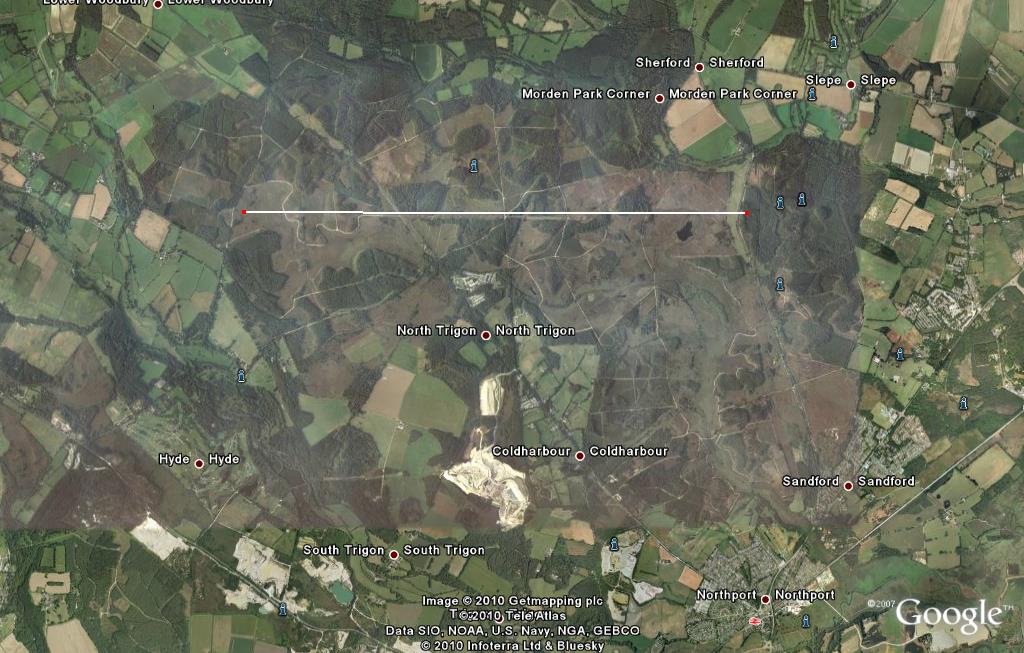
You can see all the areas where the trees have been removed. This was all forest when I was a kid.
The white line is 3 miles for scale.
I know its not old forest. We cut all that down years ago for timber, and turned it into farmland, with most of the heaths - those we didnt plant with houses.
This is all thats left.

I read this on a totally unrelated web-page today.
So should the FC clear some areas for encouraging a diversity of use, I think so.
Wings
For most of the 20th century, U.S. federal fire policy focused on suppressing all fires on national forests. The goal was to protect timber resources and rural communities, but this policy ignored the ecological importance of fire. North American forests have evolved with fire for thousands of years. Fire returns nutrients to soils, encourages growth of older fire-resistant trees, and promotes establishment of seedlings.
Decades of fire exclusion have produced uncharacteristically dense forests in many areas. Some forests, which previously burned lightly every 15-30 years, are now choked with vegetation. If ignited, these forests erupt into conflagrations of much higher intensity than historic levels. Grasses, shrubs, and saplings in the understory now form a fuel ladder, through which flames can climb to the forest canopy, killing entire forest stands.
So should the FC clear some areas for encouraging a diversity of use, I think so.
Wings
Well thats my ears well and truly singed lol
One last thing - before I go looking for a fire extinguisher...
This area used to be the heathland.
It stretched well over 10 miles across. Its now mainly houses.
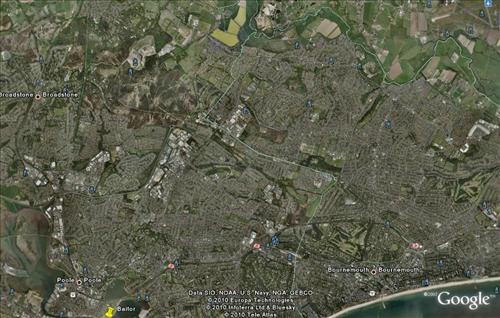
Wareham forest was er.... forest.
Going to go hide now.
One last thing - before I go looking for a fire extinguisher...
This area used to be the heathland.
It stretched well over 10 miles across. Its now mainly houses.

Wareham forest was er.... forest.
Going to go hide now.
Sadly No Idea that is human expansion for you.
I looked at where I used to live in Texas 40 years ago. On our road that was almost a mile long there about 5 homes with loads of land to roam all around where my father used to take us shooting.
All that's gone now
I looked at where I used to live in Texas 40 years ago. On our road that was almost a mile long there about 5 homes with loads of land to roam all around where my father used to take us shooting.
All that's gone now
robin wood
Bushcrafter (boy, I've got a lot to say!)
It is common for folk to think trees have always been there and never been cut. I once cut a coppice and the old chap who had lived in the house adjoining the wood for 55 years swore it had never been cut but every tree we counted had rings showing the coppice had been clear felled 45 years ago. If you really want to know dig out some old photos of the place 50 years ago, my guess is there won't be many trees but I may be wrong. The area you are looking at may have been wooded all your life (don't know how old you are) but that is quite a short spell in terms of the habitat. Are you saying that you don't believe there is valuable remnant heathland surviving below those trees? or that you feel any woodland is inherently more valuable than other habitats?
Post 1945 planting by the Forestry Commission has a lot to answer for with more ancient woodland being destroyed in 28 years than had been in the previous 400. About time to redress the balance and protect important habitats. Just one of the many landscape,ecology and habitat problems caused through the need to produce food and raw materials post second world war.
....It is common for folk to think trees have always been there and never been cut.
I agree. This was planted recently...All conifers, same height, reached maturity 30 ish years ago, now being cut and not replaced. However, there are some pretty huge stumps in between the rows that were too big to pull out.
I once cut a coppice and the old chap who had lived in the house adjoining the wood for 55 years swore it had never been cut but every tree we counted had rings showing the coppice had been clear felled 45 years ago. If you really want to know dig out some old photos of the place 50 years ago, my guess is there won't be many trees but I may be wrong. The area you are looking at may have been wooded all your life (don't know how old you are)
47, been in area about 35 of those.
but that is quite a short spell in terms of the habitat.
Are you saying that you don't believe there is valuable remnant heathland surviving below those trees? or that you feel any woodland is inherently more valuable than other habitats?
I do preffer forests to heathland. However, I do believe trees are better for the environment than heathland, and also, I know that if its got cattle on it, but its not very fertile, its much easier to get planning permission for it than a forest full of trees. Cynical, I know.
I agree. This was planted recently...All conifers, same height, reached maturity 30 ish years ago, now being cut and not replaced. However, there are some pretty huge stumps in between the rows that were too big to pull out.
I once cut a coppice and the old chap who had lived in the house adjoining the wood for 55 years swore it had never been cut but every tree we counted had rings showing the coppice had been clear felled 45 years ago. If you really want to know dig out some old photos of the place 50 years ago, my guess is there won't be many trees but I may be wrong. The area you are looking at may have been wooded all your life (don't know how old you are)
47, been in area about 35 of those.
but that is quite a short spell in terms of the habitat.
Are you saying that you don't believe there is valuable remnant heathland surviving below those trees? or that you feel any woodland is inherently more valuable than other habitats?
I do preffer forests to heathland. However, I do believe trees are better for the environment than heathland, and also, I know that if its got cattle on it, but its not very fertile, its much easier to get planning permission for it than a forest full of trees. Cynical, I know.
I understand there was some law passed that taxed inheritance of trees.
Seems the gentry were simply cutting timber rather than payng out of other sources to cover death duties.
As the tax was more than they were making from the trees, they had their woodsmen ringbark all the big trees to kill the trees rather than pay the tax.
You can still see some emormous dead oak trees in our woods with the tell tale rings today.
Ive got no probelms with heathland per se, I just think we need to protect our forests - even if they arnt ancient, as once they are gone, there will be houses on the land.
Seems the gentry were simply cutting timber rather than payng out of other sources to cover death duties.
As the tax was more than they were making from the trees, they had their woodsmen ringbark all the big trees to kill the trees rather than pay the tax.
You can still see some emormous dead oak trees in our woods with the tell tale rings today.
Ive got no probelms with heathland per se, I just think we need to protect our forests - even if they arnt ancient, as once they are gone, there will be houses on the land.
Similar threads
- Replies
- 27
- Views
- 2K
- Replies
- 15
- Views
- 929

